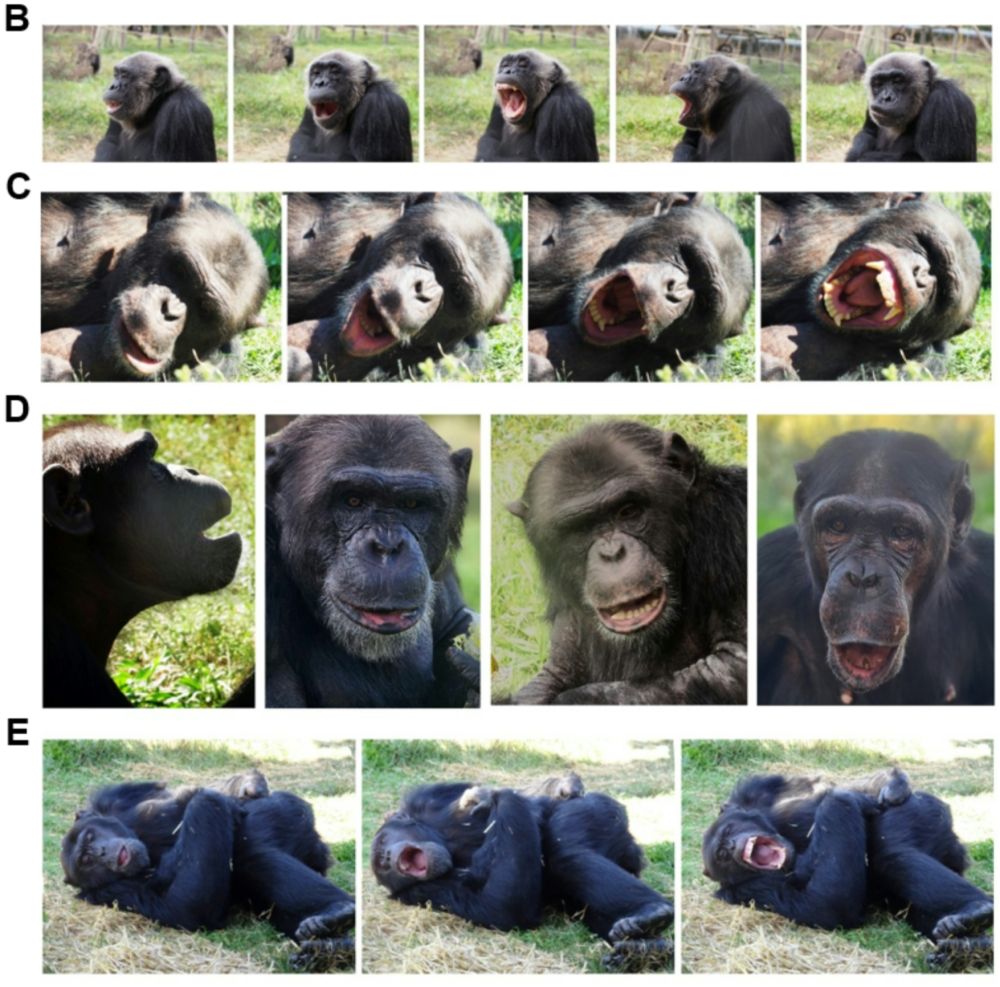A new study has reported its findings from a rather curious experiment: getting a bunch of chimpanzees to watch a disembodied android head yawning. The results revealed that the head, both alien and familiar in its appearance, had the capacity to make them yawn and even start gathering bedding materials. The findings reveal new insights into the science of contagious yawning, and what makes them so damn infectious.
There are several theories as to what drives contagious yawning, from increasing alertness to empathy. We’ve seen it occur between species, but questions still remain as to what its key drivers are.
“The contagiousness of yawning is also presumed to be reliant on neuronal activation of paths where we know mirror neurons are activated when observation of biological motion patterns is perceived, and those can only be produced by an animate subject,” said study first author Dr Ramiro Joly-Mascheroni to IFLScience. “That would have to be either a non-human animal or us humans, but if the behavioural responses would have anything to do with the activation of those neuronal pathways, then the action would have had to be performed by something that was ‘alive’.”
Based on this, Joly-Mascheroni and colleagues thought it would be an interesting next step to test what would happen if an animal were exposed to a non-biological entity that was yawning. One that they would not interpret as a conspecific or human, which is why our yawning android is just a head. Was its yawn enough to get an audience of chimps doing the same? Short answer: Yes.

The android taking expressions neutral, gaping, and yawning for a spin, as well as the back of its head.
Image credit: Aline Sardin-Damasso & Mona
Joly-Mascheroni worked with Dr Beatriz Calvo-Merino and Dr Bettina Forster, Professors in Cognitive Neuroscience at City St George’s, University of London, and colleagues at Universitat de Girona on the study. Together, they enlisted the help of 14 adult chimpanzees aged between 10 and 33 years old residing at the Fundació Mona Primate Sanctuary in Spain.
The effect of the yawn observation seems larger and more general than just a replication of the movement itself.
Dr Beatriz Calvo-Merino
It’s a place that doesn’t normally have androids among its residents, but that all changed when the robot head rocked up and started knocking out three key facial expressions: yawning, gaping, and neutral. They lasted for about 10 seconds, and then the team of scientists observed what the chimpanzees made of it all.
They saw that the most contagious expression was the full yawn with its mouth wide open. The face was so influential that not only were the chimpanzees yawning, but some of them started gathering bedding materials and lying down. The partial gaping face elicited some response, but it wasn’t as strong, and there was no contagion seen when the android kept its mouth shut.
These observations mark the first time we’ve been able to demonstrate contagious yawning being caused by a non-biological agent, and they provide some fascinating insights into the drivers of the phenomenon.

The chimps under the influence of the yawning android head.
Image credit: RMJM, Aline Sardin-Damasso & Mona
“We take away three concepts from this study,” said Calvo-Merino to IFLScience. “The first one is that this research is an example of the importance of interdisciplinary collaborations. In this project, we integrate psychology, zoology, and robotics to understand questions that are relevant to social cognition.”
“The second one refers to the fascinating generalization of the contagion yawning mechanism, which seems to resonate with the observed action even if the yawn is perceived on agents beyond humans, in this case, a robotic head (an android). And the third takeaway is related to an additional behaviour we observed in the chimpanzees.”
This might embody a symbolic meaning that may be relevant when thinking about our own evolution and that of other primates.
Dr Ramiro Joly-Mascheroni
“Some of the chimpanzees that yawned after observing the android yawning, started to gather leaves and show lying-down behaviours, responses often associated with relaxation or drowsiness. These interesting responses may suggest that the perceived yawn evoked behaviours associated with yawning, are beyond the simple motor act of yawning. So again, the effect of the yawn observation seems larger and more general than just a replication of the movement itself.”
Beyond chimpanzees, it could bring us closer to understanding our own propensity to catch yawns with such aplomb (case and point: this writer has been yawning for almost the entirety of this write-up).
“The study shows that not only is yawning contagious across agents, both animate and inanimate, but that this might embody a symbolic meaning that may be relevant when thinking about our own evolution and that of other primates,” added Joly-Mascheroni.
The study is published in the journal Scientific Reports.
Want to know more about contagious yawning? Check out the December 2024 issue of CURIOUS magazine, where we spoke to Dr Andrew Gallup all about the curious phenomenon, including how to stop a yawn in its tracks. This interview will also be released on July 21, 2025, on IFLScience’s We Have Questions podcast. Can’t wait? Check out the episodes out now.
Source Link: Chimpanzees Catch Yawns From Androids In Breakthrough For Contagious Yawning Research